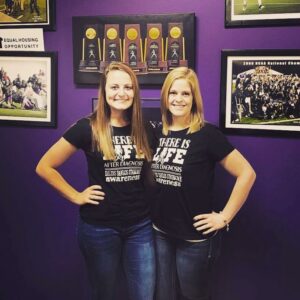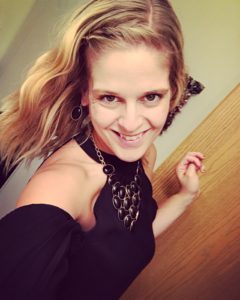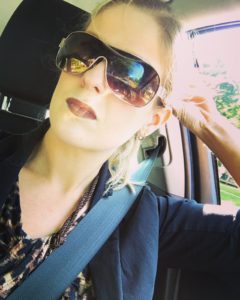It’s 10pm or so on a Monday night. I probably shouldn’t be writing this post right now, but when I agreed to write this blog, part of what I wanted to do was be as real and as raw with you as possible, because I can’t be your doctor and I can’t make the medical “stuff” any better. What I can do is be brutally honest with you about the rest of it. What I can do is sit down at my computer when I don’t want to and write what’s actually on my mind. What I can do is post the blunt truth about the reality of this condition and what medical professionals generally don’t understand–and that’s the constant ebb and flow of the acceptance of your reality.
When I was diagnosed, it was this immediately rush of excitement. I finally understood all of the things that had happened to me all my life. I was 25. I had accomplished many things I had set out to do, but still, every day my body ached with a pain I couldn’t explain. Still, I had injuries that didn’t make sense for someone my age with my activity level. Still, I saw doctor after doctor and had test after test–result always coming up “normal” even though I often cried myself to sleep at night because the pain was sometimes so bad I just couldn’t handle it.
And on that day, on that “Diagnosis Day” as I’ve grown to call it, everything stopped. For just a second, my entire world stopped moving. I was alone in a room with a resident and I told him through laughter “don’t tell me I have EDS” because a close friend had told me two years before she knew what it was. He didn’t smile, though. He didn’t laugh. He turned his eyes to those 12×12 inch tiles on the floor and went out into the hallway to find his supervising doctor. He was excited when he got out there. He’d found his rarity. He’d found someone unique. He’d figured out a mystery of a patient who’d had test after test come up normal. He could put words on a chart that would make sense. He would get an A. I would get an incurable diagnosis–and a life that would never again be the same.
I wish I knew his name. I wish I could find him now and explain to him how different it is to be here now, at 10pm writing in my kitchen about this condition that changes everything I do. I wish I could explain to him that while he sees me as a breakthrough, I saw it as explanation and then as a curse. You see, I actually don’t ever see doctors as my enemies–not even the doctors who didn’t diagnose me throughout my life. I see them as the ones who pushed me a little bit harder. I see them as the reason I’m here writing this for you, you who might be reading this for a child who doesn’t yet have a diagnosis but who desperately needs one. I wish I could tell him that I didn’t need him to look at the tiles that day, that I needed him to look me in the eye and tell me that I wouldn’t have a cure, because until a doctor says those words you do, you never see your limits, you keep pushing your body too hard–and when you have EDS, that might mean paying for pushing those limits in pain and injuries. You won’t ever understand what it is to have a condition you’ve never heard of until the day it’s actually in print on your chart, even when the doctors say the words to you, even when you say the words to those you love, even when you write them down the first time–none of them mean anything until an MD etches it down in the permanent record of your life. That’s when it changes. That rush of excitement you have when you finally understand what is different about your body lasts for a period, but then you realize there is no medication to “fix” this, no antibiotic to take for seven days to rid you of this infection. Your DNA is not like a “normal” body and you will have this every day for the rest of your life. That’s when the excitement can become terror, anxiety, or depression. For me, it become all three. At once. It was super fun.
I’m here to tell you that the idea of acceptance, at least for me, comes and goes. Some days, I’m at terms with my reality and I accept that my body has limitations other people my age don’t face. I accept that because of how much EDS affected my lower extremities as a child, I now need a handicap parking permit and I will face the stares and whispers of strangers in a parking lot on a cold, icy winter day when there is zero chance I could safely navigate the entire length of a parking lot. Then there are the days when I refuse to believe it. On those days, I push my body past its limits. I decide that collagen is my enemy and I will conquer it. I decide that every extraordinary person said that limits did not exist and I exceed them instead of recognizing that I can accomplish amazing things well within the safety of what my body can handle. On those days, I cry. I cry over my laptop at night, because I think about how different my body feels. I cry when I think about the naive young girl who thought she could run a half marathon. I cry over the girl who thought the worst challenge in her life would be two leg surgeries in high school. I cry over the future and the things I don’t even understand yet.
But then, I decide life is just too much worth living to stay there. I have always believed those moments are okay. I have always believed that you are allowed to visit those moments of self-pity, as long as you don’t move-in or make it an extended vacation.
Tonight, I’m sitting in my kitchen, wiping up a few tears over my laptop because tomorrow I’m getting up at 5am to go to physical therapy at a hospital again instead of having coffee and relaxing before work. I decided to make those tears mean more than just self-pity, though. I wanted them to mean something for all of you. So, here I am, writing down the raw truth about accepting an incurable condition.
Some days, I do. Some days, I don’t.
But, every day, I live.

My staff had a whole day last EDS Awareness Month to recognize what I deal with. It meant the world.





